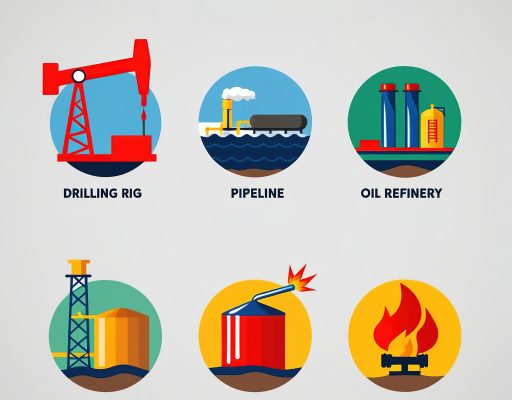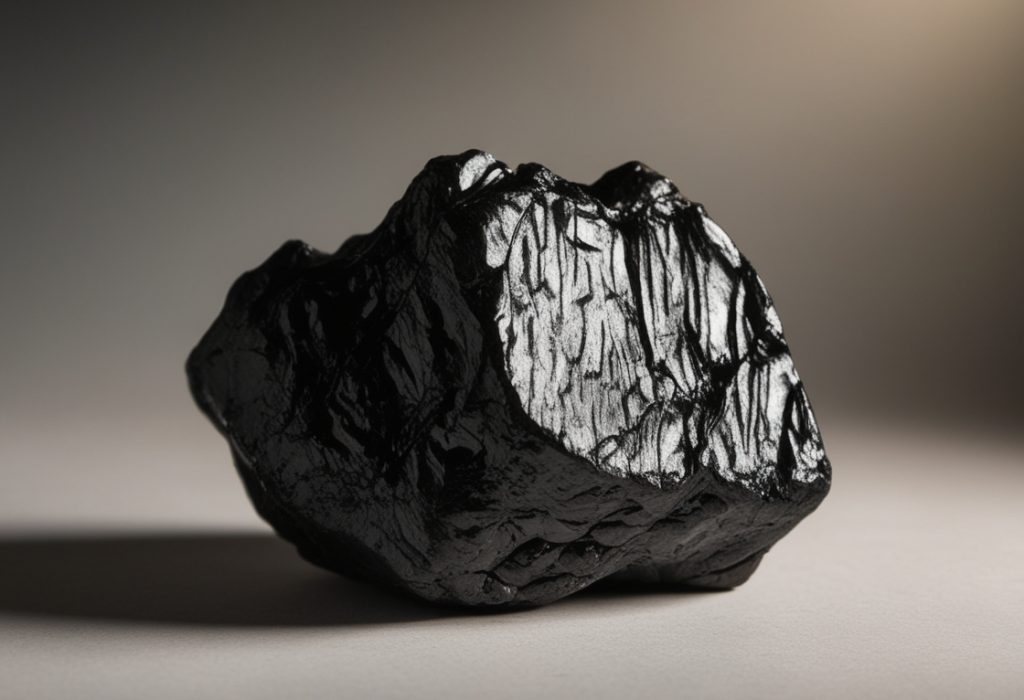Fossil Fuels

Explore the world of fossil fuels, their impact on the environment, and the transition to sustainable energy sources. Stay informed and engaged with our insights.
Early Fuel:
In the first phase of the machine age, humans directly used energy obtained from nature. Around 6000 or 5000 BC, people began using fossil fuels for purposes other than heating their homes. Evidence of this is found in burnt bricks, statues, and other artifacts from the Middle East. The period of the Babylonian civilization (2000–538 BC) is considered the first era of fossil fuel use, with crude oil and asphalt used as fuels. At that time, there were many natural oil seepages throughout the Middle East, making crude oil widely available there. Middle Easterners did not use coal then, as their tools were insufficient for mining. It is believed that China first used coal in 1100 BC. Meanwhile, wood remained a primary fuel source in most parts of the world. Natural gas was first used for home heating in Newford, New York, in 1821.
Fossil Fuel:
Fossil fuel has played the most important role in fuel generation throughout human history. Due to natural processes, biological materials from marine and terrestrial plants and animals were buried underground for thousands of years. Under high temperature and pressure, along with bacterial decomposition, these materials often transformed into oil and were stored in traps (anticlines) formed by hidden cracks in rock layers in porous rock areas. Since this fuel originates from the remains of organisms (plants and animals), it is called fossil fuel. Fossil fuels are found in solid, liquid, and gaseous states. Solid fossil fuels include mineral coal, gaseous fossil fuels are natural gas, and liquid fossil fuels are known as crude petroleum.
Future of Fossil Fuel:
Although energy is essential for the development of world civilization, the most alarming issue is that fossil fuels are gradually being depleted due to unplanned human use. In this situation, new ways of addressing the future energy crisis are being explored. Already, substances like alcohol, benzol, ammonia, nitrogen hydrides, and hydrogen are being tested as alternatives to fossil fuels, and research is ongoing to enable their commercial use.
Some Alternatives to Fossil Fuel:
As civilization advances, the demand for fossil fuels continues to rise, leading to a decrease in fossil fuel reserves. It is estimated that fossil fuel reserves may only last for the next three or four decades. Therefore, the search for alternative fuels has become essential. Scientists have already developed several synthetic fuels that could serve as alternatives for automobiles, trucks, and aircraft. However, these fuels are costly and are still being used primarily in experimental projects.
The following synthetic fuels can be used as alternatives to gasoline:
- Alcohol produced from carbohydrates
- Example: Ethanol (C₂H₅OH)
- Alcohol produced from coal
- Example: Methanol (CH₃OH)
- Ammonia (NH₃) produced from nitrogen and hydrogen
- Hydrogen (H₂) produced by electrolysis or thermochemical splitting of water
Advantages and disadvantages of alternative fuels:
The blending of ethyl and methyl alcohol with gasoline has been used for a long time. To use these two fuels in a single internal combustion engine requires little modification of the engine. Methanol is always used in bracing cars as methanol gives more power per liter than gasoline.
Ammonia is used as fuel in internal combustion engines. But the cost per unit of power generation is very high and the fuel cost is also high. Hydrogen has been pioneered as a future fuel alternative to gasoline but there are still many problems in its storage and transfer.
Combustible hydrogen emits a nearly pollutant-free exhaust with little nitrogen oxides. Nitrogen oxides can be kept to a minimum by controlling the combustion environment. Its transfer method is also safe.
The energy production characteristics of hydrogen are superior to other fuels such as gasoline, methane, methanol and ethanol. The mass energy of hydrogen is maximum. The heat produced by a unit mass of hydrogen on combustion is 2.4 times that of hydrocarbon fuels, 4.5 times that of ethanol and 6 times that of methanol.
When direct current is applied to water, the water splits into hydrogen and oxygen (electrolysis. Hydrogen is harvested from it. However, generating electricity requires another energy source. Solar energy generates electricity by producing hydrogen from water. If it is condensed and supplied in cylinders, hydrogen can be used as an alternative to fossil fuels in the future. If hydrogen as a fuel is completely replaced by fossil fuels, the source of fuel in the future will be endless, because the amount of water on earth is the largest from which hydrogen is produced. It is not possible to carry hydrogen in gaseous form as fuel for motor vehicles or aircraft or as fuel for stationary engines as it requires large containers. There are three systems of downsizing hydrogen supply for motor vehicles. The systems are gas compression to 1500-3000 psi pressure, gas rejuvenation and metal hydrides, requiring large steel containers to hold the compressed gas at high pressure which unnecessarily adds weight to the vehicle and is unsafe. Nitrogen is carried in liquid form for use in aircraft and spacecraft. Hydrogen can be used in automobiles either in liquid form or as a metal hydride. It has to be stored at very low temperature in special cylinders to keep it liquid.
Understanding Solid Fuels: Types, Advantages, and Their Impact on the Environment

Learn about solid fuels and their role in energy production. Access valuable insights on types, benefits, and eco-friendly practices for using solid fuels.
Definition of Solid Fuel:
Combustible substances that remain solid at normal atmospheric pressure are called solid fuels.
Composition and Properties of Solid Fuels
Solid fuel contains combustible organic matter and non-combustible material or mineral components known as ballast. The organic part of the fuel consists of carbon, hydrogen, and sulfur, and may also include elements such as nitrogen. The ratio of these elements in the fuel determines its properties.
The non-combustible or mineral part of the fuel includes moisture and minerals, with components like Fe, Ca, Mg, Al, K, and Na, as well as carbonates, sulfates, and sulfides. When the fuel is ignited or converted into gas, the mineral particles form a residue known as ash, with many components decomposing to form oxides during pyrolysis.
Ash and Sulfur in Solid Fuel
Ash is the residue that remains after solid fuel combustion. Sulfur is an impurity that affects the quality of fuel and its products. The presence of sulfur in fuel can appear as sulfide sulfur, sulfate sulfur, and organic sulfur. During combustion or gasification, sulfide sulfur and organic sulfur are oxidized, producing SO₂. In this process, sulfate sulfur remains in the ash. During the dry distillation of fuel, some sulfate is distributed among the various products, while most stay as solid residue.
Composition and Properties of Natural Solid Fuels
Wood, peat, lignite, and various types of coal are notable among natural solid fuels. Among these, the composition and properties of peat, lignite, and different kinds of coal are discussed in the next chapter. The composition and properties of wood are discussed below.
Wood contains cellulose (C₅H₁₀O₅), lignin, resins, inorganic materials, and about 60% water. Depending on the condition of the wood (dry or freshly cut), it can contain between 25% and 60% water. The dry wood components are as follows:
C = 50%, O = 35%, N = 7%, H = 6%, and Ash = 2%
The calorific value of dry wood ranges from 4000 BTU to 6480 BTU per pound. Wood is not used as fuel in industrial plants due to its low calorific value. It is commonly used for domestic or cooking purposes in rural areas and in places where natural gas is not available.
Composition and properties of artificial solid fuels:
The following fuels are classified under synthetic solid fuels.
(A) Charcoal
(b) Coke
(c) Briquettes
Charcoal: Charcoal is prepared by burning wood or through the destructive distillation of wood in limited air within pits or kilns. Generally, hardwood is used to make charcoal, but wood of various qualities can also be utilized. Charcoal contains little volatile matter and is highly flammable, burning with minimal flame and smoke. It contains low amounts of sulfur and phosphorus. Its use as a fuel in metallurgy has been declining significantly. The calorific value of charcoal ranges from 6,000 to 8,000 calories per gram.
Coke: Coke is produced by the destructive distillation of coal in a coke oven. When coking occurs at 500°C-750°C, it is known as low-temperature carbonization. The coke produced by this method, called semi-coke, is soft and contains 5-15% volatile matter. Semi-coke is used directly for domestic purposes or as fuel in briquette form, and it is also used in powdered or pulverized form as furnace fuel. When coking occurs at 900°C-1400°C, it is known as high-temperature carbonization. The coke produced is solid and suitable for use as a motor fuel, but it has a lower calorific value. High-quality coke contains approximately 90% carbon and less than 4% ash. A pound of coke with 90% carbon and 0.5% hydrogen has a calorific value of about 13,400 BTU.
Briquettes: Briquettes are a type of compressed fuel, made by mixing pulverized coal, nut coal, lignite, or coke with 4-5% binding material and applying a pressure of 1,800-3,000 PSI. Tar, asphalt pitch, or molasses are commonly used as binding agents with coke. Briquettes can also be made without binders by applying very high pressure (12 tons or more), though this is commercially expensive. Typically, peat is sun-dried to a 50% moisture content and then pressed to produce briquettes of specific sizes for domestic use, industrial applications like brick kilns, or as fuel for small power generation plants (up to 10 MW). The calorific value of briquettes is about 8,000 BTU per pound.
List of Industrial Solid Fuels:
The following are solid fuels commonly used in industrial plants:
- Fossil Coals
- Oil Shales
- Furnace Slags
- Peat
Fossil coal can be further categorized into three types:
- Brown Coal
- Coals Proper
- Anthracite
Uses of Industrial Solid Fuels:
- Oil Shale: Generally used as a local fuel.
- Peat: Also used as a local fuel.
- Furnace Slag: This is also categorized as a local fuel.
- Fossil Coal: Used in furnaces.
Advantages and Disadvantages of Solid Fuels Compared to Liquid and Gaseous Fuels:
Advantages:
- Solid fuel can be stored safely due to its high ignition temperature.
- It is relatively inexpensive.
Disadvantages:
- Very little heat is converted into work, as most heat is lost through radiation and up the chimney due to insufficient contact surfaces.
- Waste products such as clinker and cinder result in a significant amount of non-combustible residue
